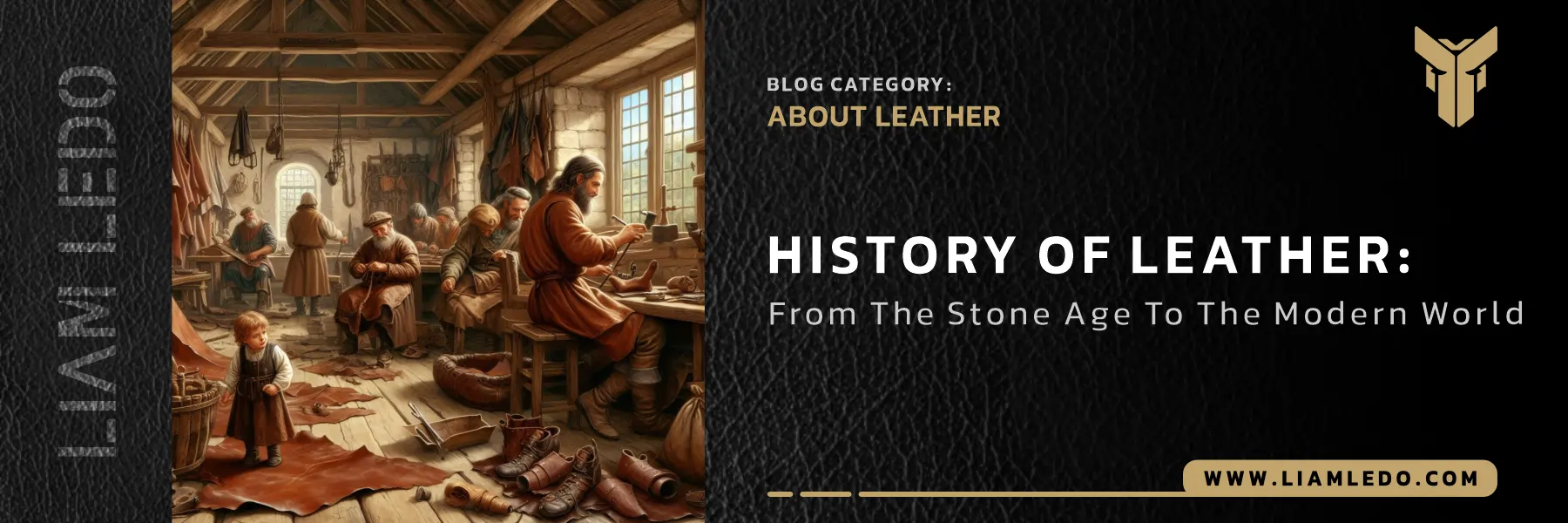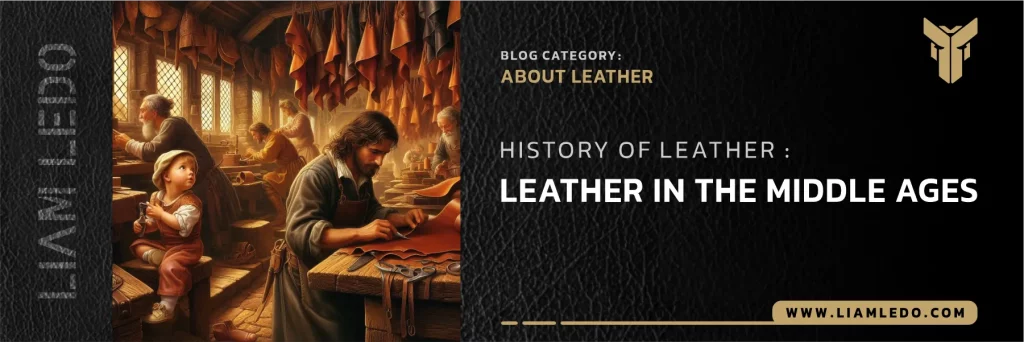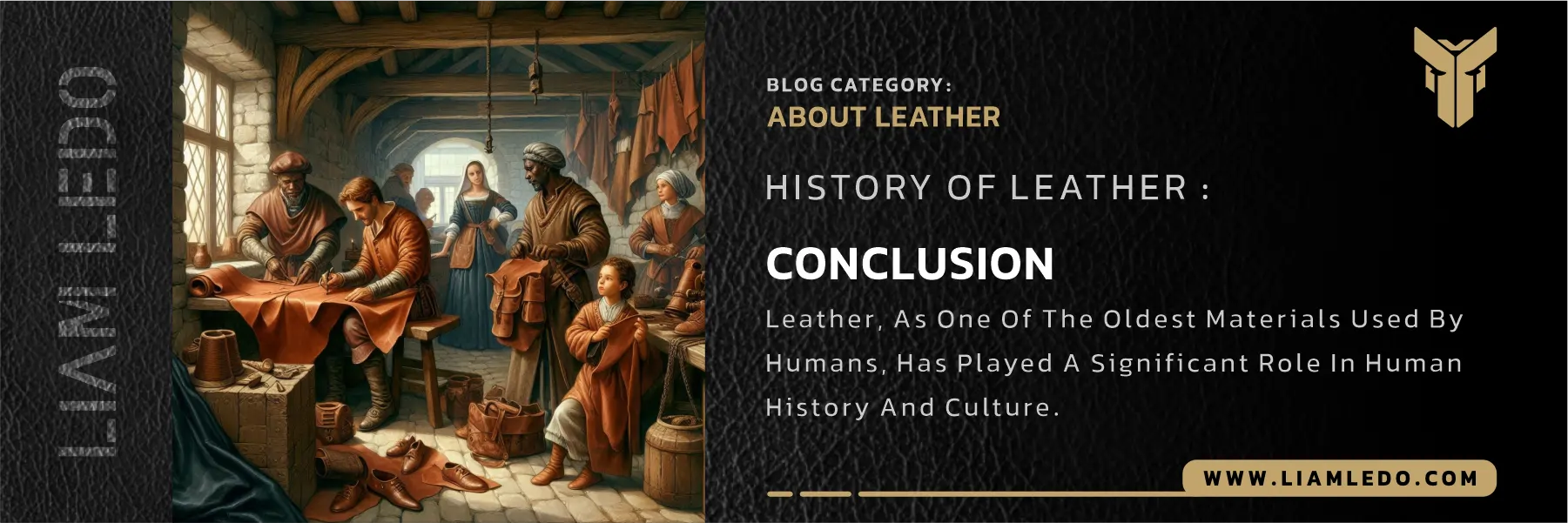
Leather is one of the oldest materials used by humans, and its importance has spanned thousands of years. From primitive tools to luxury fashion items, leather has played a vital role in human life. This article explores the history of leather making, its evolution across civilizations, and its significance in modern industries. We will also discuss sustainable leather products and eco-friendly methods for modern leather production, highlighting how tradition and innovation continue to shape the leather industry today.
Learn more about leather and make better choices:
1.Leather in Ancient Times:
Stone Age:
The origins of leather date back to the Stone Age. Early humans discovered that animal hides could be used for clothing, shelter, and tools. Using primitive stone tools, they stretched, dried, and softened hides, marking the first steps in the development of leather craftsmanship. These early methods laid the foundation for the evolution of leather products across centuries.
Ancient Civilizations:
- Ancient Egypt: Egyptians used leather to make shoes, belts, tools, and even decorative items for royal tombs. Tanning methods often involved natural oils and salt to improve durability.
- Mesopotamia: Leather was essential in Mesopotamia for military gear, shields, and saddles. Historical texts highlight its role in everyday life.
- Ancient Greece and Rome: Leather played a key role in producing military uniforms, footwear, and functional tools. Romans refined tanning and dyeing techniques, enhancing both durability and aesthetic appeal.

2.Leather in the Middle Ages:
During the Middle Ages, the art of leather making became a prominent profession. Cities across Europe evolved into major centers of leather craftsmanship.
Europe:
- England: Cities like London and York became renowned for leather production. Leather was used not only in shoes and belts but also in armor and manuscripts.
- France and Italy: Italy, particularly Florence, became a hub for high-quality leather goods. Artisans created beautifully decorated leather products that were valued across Europe.
Middle East and Asia:
- Iran: Leather production in Iran has ancient roots, continuing through the Middle Ages with products such as shoes, clothing, and saddles.
- China and Japan: In these countries, leather craftsmanship became sophisticated, producing both functional and artistic items.
3.Leather During the Renaissance:
The Renaissance, a golden age for art and culture, also influenced the leather industry. New tanning techniques and decorative methods emerged, transforming leather into a material for luxury items.
Environmental Issues:
One of the most pressing challenges of the leather industry in Asia is its environmental footprint. Traditional tanning processes consume large amounts of water and involve harmful chemicals. Countries like India and China face international pressure to implement greener practices and reduce pollution.
Europe:
- Italy: Florence remained a central hub, where artisans decorated leather with gold, silver, and natural dyes.
- Spain: Spanish leather gained global recognition for its quality and intricate designs.
North America:
With European colonization, leather-making techniques reached North America. Native Americans had extensive knowledge of tanning, which blended with European methods, creating unique leather products.
4.Leather in the Industrial Era:
The Industrial Era revolutionized leather production, introducing machinery and chemical methods that increased efficiency and consistency.
Industrial Development:
- Tanning Machines: New machinery allowed faster processing of hides and mass production of leather goods.
- Chemical Techniques: The introduction of chemicals like chromium reduced tanning time and enhanced durability.
New Uses for Leather:
- Fashion Industry: Leather became essential in shoes, belts, bags, and clothing.
- Automotive Industry: Leather interiors became a symbol of luxury in cars.
- Sports and Military Equipment: Durable leather was widely used in gloves, balls, shoes, and military uniforms.
5.Leather in the Modern World:
Today, leather remains highly valued, but environmental concerns and ethical considerations have encouraged the development of alternatives.
Modern Leather Production Techniques:
- Vegetable-Tanned Leather: This method uses plant-based materials, producing eco-friendly and sustainable leather.
- Synthetic Leather: Materials like PU and PVC offer animal-free alternatives at a lower cost.
Modern Uses of Leather:
- Fashion and Accessories: Leather continues to be used for high-end bags, shoes, and clothing. Designers innovate using both traditional and modern leather-making techniques.
- Automotive Industry: Luxury cars often feature leather seats, steering wheels, and upholstery.
- Sports and Military Gear: Leather remains the preferred material for durable and reliable equipment.
Environmental and Ethical Considerations:
- Environmental Impact: Leather production can consume large amounts of water and involve chemicals harmful to ecosystems.
- Animal Rights: Growing awareness of animal welfare has driven demand for sustainable leather products and alternative materials.

Conclusion:
The history of leather making demonstrates the material’s enduring value and versatility. From ancient civilizations to the modern world, leather has evolved in craftsmanship, function, and style. Modern challenges, such as environmental sustainability and ethical concerns, have encouraged innovative methods like vegetable tanning and synthetic alternatives. Whether for fashion, industry, or daily use, leather remains a symbol of durability, elegance, and cultural heritage.
By understanding the evolution of leather and the craftsmanship behind it, consumers can appreciate its historical significance and make informed choices when selecting products. Exploring both traditional techniques and modern sustainable methods ensures that leather continues to thrive responsibly in the future, balancing cultural heritage with contemporary innovation.
Source: The Gentleman’s Gazette | Wikipedia






